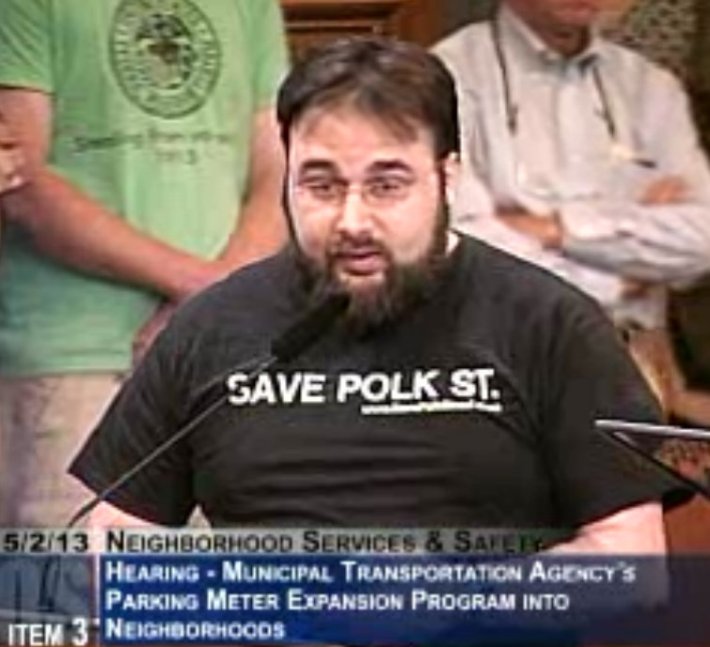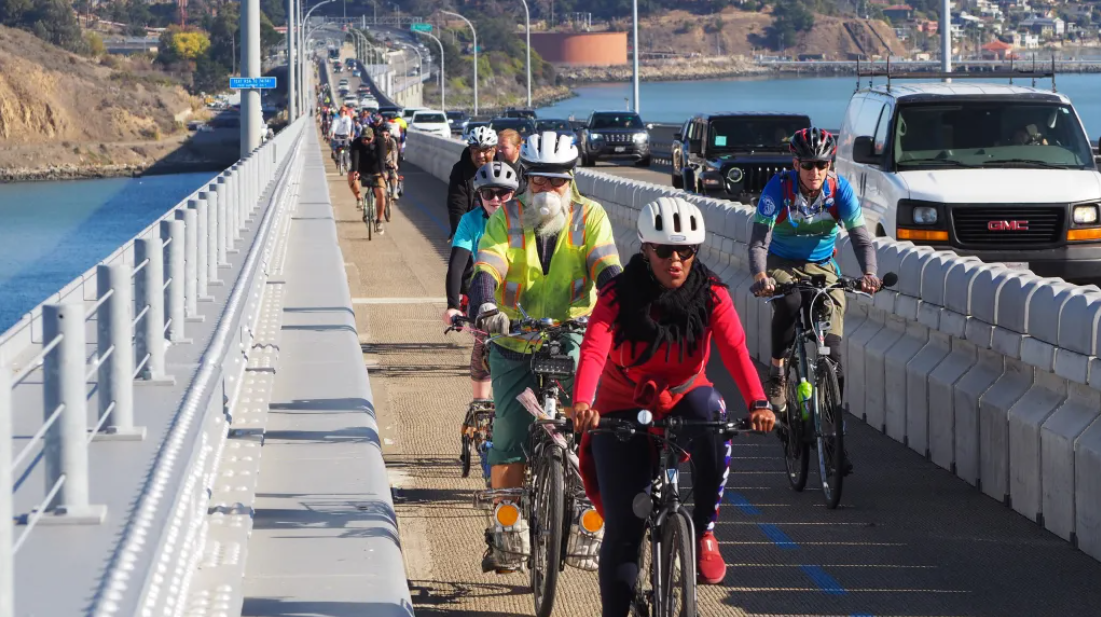Debunking the Misinformation Propagated By “Save Polk Street”
1:52 PM PDT on May 3, 2013
It's clear that the parking-obsessed, anti-bike lane merchants behind the "Save Polk Street" group have no interest in vetting information before making their case. Concrete facts certainly had no place in the fearmongering rhetoric spouted by street safety opponents at the March meeting they staged, encapsulated by Flipp store owner Dan Kowalski's dishonest comparison of the Polk Street project to bike lanes on non-commercial streets in other cities.

Meanwhile, proponents of safer streets report that arguments using empirical evidence have fallen on deaf ears with the anti-bike lane crowd.
At the March meeting, Chris Provan, a Russian Hill Bookstore manager wearing a "Save Polk St." t-shirt, blamed the partial, door-zone bike lanes that replaced a traffic lane in 2000 -- increasing bike traffic on Polk by as much 41 percent in the first ten months [PDF] -- for causing a drop in his business in the subsequent years. Apparently, Provan still blames the bike lane (it couldn't have been, say, the effect of the internet on retail book sales). Provan then argued that the status quo should be maintained because today, "people are coming here by droves, and there's more of them than can find parking as it stands." As the SFMTA found, 85 percent of those people are coming without a car.
Unsurprisingly, the Save Polk Street website's FAQ page is rife with this kind of misinformation. It's time to de-bunk some of the propaganda that's being disseminated by the group's leaders. Let's start with this statement of theirs:
SAVE POLK ST. believes that bicycle, pedestrian and transit safety and aesthetic improvements can be achieved through alternatives that do not require the wholesale removal of more than half to all of the parking on Polk Street.
First, nothing the SFMTA has proposed would remove more than half of the parking on Polk. More importantly, what street safety opponents are really saying here is that they will not tolerate the safest options for Polk, because some parking would be removed. Retaining parking means that specific improvements -- like sidewalk bulb-outs or protected bike lanes -- cannot be implemented.
People who drove to Polk Street reported spending the most per trip compared to those who used other modes of transportation.
This is cherrypicking, pure and simple. Drivers did report spending more money per trip than other customers in an SFMTA survey, but the same survey also revealed that drivers made fewer trips per capita than customers who arrived by walking, biking, or transit. The upshot is that drivers spend less per week than customer who come to Polk by any other mode. Of course, when the Save Polk leaders don't like the result of the survey, they dismiss it:
The SFMTA survey never asked people how much they spend per week on Polk Street. Was there a need for the SFMTA to manipulate its own data?
Sorry, folks -- you can't have it both ways by making your case with survey data, then discounting the same data with your next breath.
Ed Reiskin, Director of the SFMTA, has acknowledged that the loss of 15% patronage from people who drive to Polk Street could indeed pose a financial hardship to small businesses with small profit margins...
Restricting Polk Street to patronage from people who can walk, take public transit or bicycle to Polk Street will not increase business.
The way Save Polk phrases it, removing a sliver of parking to make the street a more attractive place to visit would prevent all 15 percent of people who currently drive to Polk from getting there at all, thus leading to a 15 percent drop in business. In reality, only 6 percent of the parking supply along the corridor (more than 5,000 spaces) is on Polk. With at least 94 percent of parking spaces within a block of Polk remaining, people will still be able to drive, park, and load to get to the street. Meanwhile, effective streetscape improvements will make it safer and more inviting to walk and bike to to Polk. As we've seen when similar projects are implemented on business corridors in SF and NYC, this typically draws more foot traffic.
Q: Won’t removal of parking increase business for Polk Street?
A: No. The SFMTA recently conducted a Polk Street Intercept Survey where people were asked the mode of transportation they used to get to Polk Street (car, bicycle, walk, public transit) and the amount of money they spent or intended to spend on Polk Street that day. The SFMTA claims that its survey shows that the removal of parking will increase business for Polk Street. It does not.
This makes it sound like the SFMTA wants to remove parking for the hell of it. Save Polk doesn't like to mention the protected bike lanes, pedestrian safety upgrades, and expanded public space that would be created using the space reclaimed from car storage.
Additionally, the SFMTA never claimed "that its survey shows that the removal of parking will increase business for Polk Street." One can infer from the data, however, that the notion that business on walkable, urban commercial streets like Polk depends on driving customers is unfounded, and that if some parking gives way to safety improvements, the sky won't fall.
It's important for city leaders and San Franciscans to understand that this is the kind of argument driving policy decisions to prioritize parking above public safety.
Stay in touch
Sign up for our free newsletter
More from Streetsblog San Francisco
Commentary: Merchants Are Getting People Killed
The number one local obstruction to curbing traffic violence is commerce and merchant groups.




